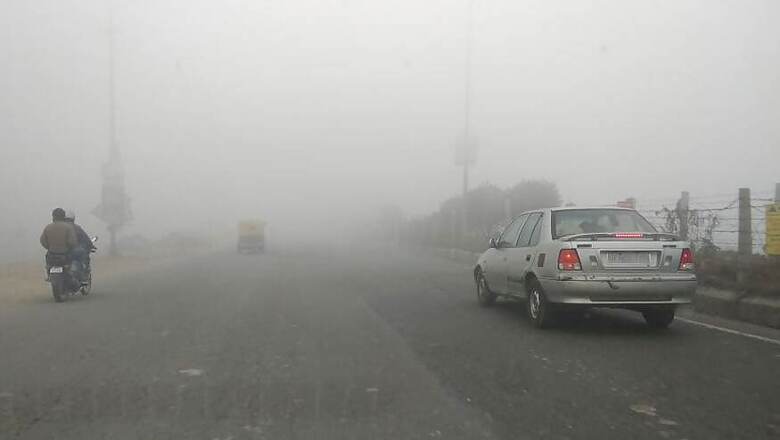
views
New Delhi: Dense fog over Delhi continued for the third day as 43 flights were delayed and 7 remained cancelled till 8am on Tuesday. Scientists studying the fog pattern in Delhi say the city will face similar conditions for another 2-3 days before it comes to rest for a while.
The fog cover over Delhi might have put many at risk and disrupted flights and train services due to extremely low visibility; however, it did help the Ministry of Earth Sciences’ (MoES) Winter Fog Experiment (WIFEX) on fog formation and prediction methods.
The January fog marked the third year of the MoES studying fog at New Delhi’s international airport and the day of low visibility and cancelled trains and flights was one of heavy data collection for the researchers.
Working on a model used by London to predict fog during the 2012 London Olympics, scientists hope to gather enough data by the end of this winter.
As wind speed and other the atmospheric conditions over the city became stable, the fog descended on the roads disrupting traffic on January 1-2. The fog is expected to persist for two more days till the wind picks up again.
“We had successfully predicted the fog a day in advance,” said Dr. M Rajeevan, Secretary MoES. “As of now we can predict fog 8-12 hours in advance and the experiment is helping us strengthen our modelling system.”
For now, the wind is expected to pick up speed in two days. Some rain is also expected to dispel the fog by January 6. “We will still have foggy days till the end of January,” warned Rajeevan.
The study that was started in November 2016 shows that the number of fog days in Delhi has increased over the years.
While there were only 38 fog days back in 1981, there were 74 such days in 2016.
The researchers say that while wind is a crucial factor for fog formation, Delhi’s topography, particles in air and construction work also play an important role to build the fog cover.
Dr EN Rajagopal, Director, National Centre for Medium Range Weather Forecasting (NCMWRF), told News18, “Data is crucial. Last year, the WIFEX, operating at the Indira Gandhi International Airport put in place a model similar to the one that was used in London during the Olympic Games. But there is a huge scope for betterment as we are not as equipped as them.”
“When wind speed falls and temperature dips, the atmosphere has enough water vapour, humidity and hits a saturation point and condenses,” he explained. The aerosol content in Delhi's air could allow water particles to condense even more.
Delhi's ridge-like areas only add to the fog. “So, the city ends up with pockets of foggy areas,” he explained.
However, with this experiment, Indian scientists hope to be able to issue more accurate and sharper alerts in the coming seasons.



















Comments
0 comment